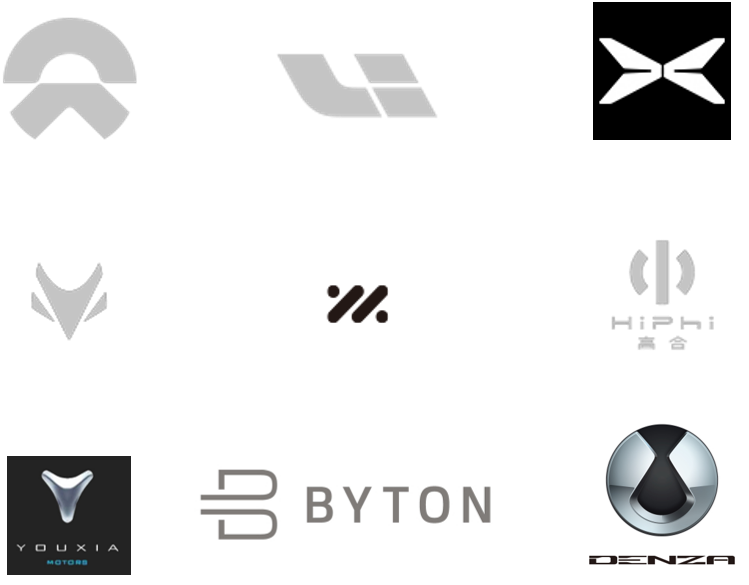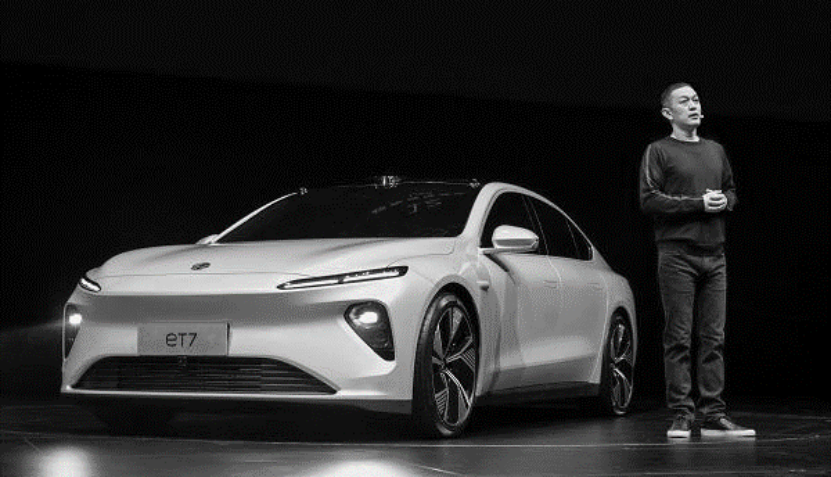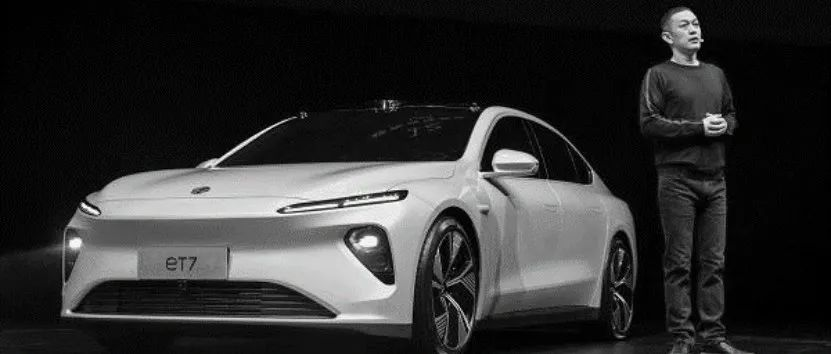Author: Su Qin
Two cows, “Little Cow” and “Big Cow”, walk on the ground. Following the release of the NIUTRON’s first SUV – ZIYOJIA NV, which is positioned as a luxury medium to large-sized city exploration SUV, NV was originally scheduled to be officially launched on March 31, 2022, but now it has been postponed.

The cake in the new energy vehicle market is getting bigger and bigger. Those who have come before have already been sifted out, while those who follow still push forward. Whether they are traditional or emerging, they all want to get a share of the pie.
As for the quality and future direction of ZIYOJIA, let’s put that aside for now. Just focusing on the word “luxury”, have you noticed that it has been used frequently in emerging new energy brands in recent years?
Looking at domestic new energy brands, NIO is positioned as an “independent luxury brand,” LI ONE is positioned as a “luxury six-seat intelligent electric SUV,” Jixu Alpha S is positioned as a “new generation intelligent luxury pure electric sedan,” and as we mentioned earlier, ZIYOJIA NV is positioned as a “luxury medium to large-sized SUV.” There are many brands or models that claim to be luxury.

So, with so many domestically-produced new energy vehicles claiming to be luxury, should we as consumers consider them luxury cars? How should we define the luxury of new energy vehicles?
Luxury of Traditional Cars
First of all, let’s take a traditional perspective. What kind of car is considered luxurious?
Firstly, who uses it? Without considering the price, configuration or workmanship, we judge whether a car is luxurious or not based on the user’s rights or wealth. This is the simplest way. For example, the British royal family uses Rolls-Royce, and the American president either rides in a Cadillac or a Lincoln; these cars are all recognized as luxury.
Secondly, the story behind the car. Connecting with car owners through stories about other people’s deeds or the stories of the product is the most commonly used way to sell luxury cars. After all, luxury cars often have a hundred years of history and there are countless touching stories. When the moving story stirs the car owner’s mind, the car is no longer just a means of transportation, but part of their emotional life, and even a bridge between reality and dreams. For those who have the purchasing power to buy luxury brands, how many of them care about fuel consumption per hundred kilometers, or how much the annual maintenance fee is… What they care about is the symbolic meaning behind the luxury brand, and the poetic or hegemonic emotional power that it represents.Thirdly, craftsmanship. Luxury brands will not boast about how automated their factories are, but rather how much manual work has been put into a car. They will not boast about how big their center console screen is, but rather how high-end the materials are. For example, Lexus, known for their storytelling, has equipped their LS with the Japanese national treasure Nishijin weaving, lined with 0.0001mm platinum leaf handcrafted by artisans. When the ambient lights are turned on, it creates a poetic atmosphere, as if moonlight is shining through clouds of platinum leaf onto the path of Nishijin weaving, being elegant but not flashy, high-end but not pretentious. It’s not only exquisite craftsmanship, but also cultural heritage.
Lastly, configuration is not a crucial factor when buying a luxury brand, since it’s considered the most basic and primary element of a luxury brand. How can a car call itself luxury if it cannot even accelerate to 0-100 km/h in less than 10 seconds?
In fact, there is no concrete definition of a luxury car, as luxury is formed by decades or even hundreds of years of high-quality production and brand influence, as well as a collective understanding of a fine craft over thousands of years. The above dimensions are just derived from the traditional car industry over the past century.
Then, can we use these dimensions to define luxury in new energy vehicles?
If we look at it from a traditional perspective, no new energy vehicle can be considered as luxury.
Firstly, in Jean Baudrillard’s “The Consumer Society,” he said, “Tell me what you throw away and I will tell you who you are.” Products used by the aristocracy to demonstrate their superiority through wastefulness are universally recognized as luxury products. Thus, true luxury is not based on what you own, but on what you waste. Gasoline is naturally more expensive than electricity, so a car that runs on gasoline naturally appears more luxurious than one that runs on electricity.
Secondly, currently there are no famous figures appearing in serious events riding in new energy vehicles, and short-lived new energy brands have no stories to tell. No new energy vehicle can highlight how much craftsmanship has been integrated into its products. They can only rely on hard configurations as a sharp weapon to fight brutally in the new energy market. However, as our country strives to achieve “carbon peak before 2030 and carbon neutrality by 2060,” traditional standards such as fuel and wasteful craftsmanship are bound to be broken.The wheel of time rolls forward, and the rising dust is destined to bury the concept of “fuel consumption” deep down. Perhaps one day, it will be the turn of the new energy brands to reign supreme, and the old-fashioned standards of usage, stories, and workmanship will re-emerge, used to suppress newcomers.
Although there is a clear distinction between traditional luxury brands and new energy luxury brands, there are also some commonalities that can be used to define the luxury of new energy!
Firstly, luxury price. Although the monetary figure may seem vulgar, it is an important criterion for measuring luxury. New energy vehicles claiming to be luxurious have prices that match their market position, with prices comparable to BMW 3 Series, Mercedes-Benz C, and E, often costing hundreds of thousands of dollars. From this point of view, new energy vehicles can be regarded as luxurious!
Secondly, luxurious atmosphere. Luxury is an intuitive feeling that does not require taste. For example, William I gave Peter the Great an amber room. With just one glance, a luxurious, extravagant feeling penetrates to the heart. New energy vehicle brands are mostly known for their technological style and minimalism. Their way of expression often involves creating complex light and shadow surfaces without too many lines on the exterior; canceling physical buttons on the interior and integrating them into a large screen. Some call it “future-oriented”, while others call it “bare walls”. However, it is difficult to determine whether it is considered luxurious.
Thirdly, luxury style. A luxurious car not only has a high level of style but also shows the unique taste of the owner or user. For example, Bentley wraps the cabin in koa wood from Hawaii, with delicate patterns and shimmering colors, tries to minimize the use of paint and fully release the natural scent, reflecting the brand’s style and the owner’s taste.
If these three criteria are used to measure the new entry-level luxury midsize SUV from Zhiyoujia NV, what kind of result will it yield?
Firstly, the price of Zhiyoujia NV is not yet known, so it is impossible to make a conclusion about whether the price is luxurious or not; secondly, the biased and rounded exterior design style inevitably brings to mind Land Rover, perhaps touching on the edge of luxury. However, the design of a fixed flat screen in the middle of the center console is somewhat aesthetically fatiguing for users. Lastly, the so-called double-sided circular daytime running lights are called “exploring the nature at a glance”, but no matter how you look at it, it looks like the headlights of a small electric car transferred to the Zhiyoujia, giving people a feeling of buying Hermès at a wholesale market, falling slightly short on style.
Not only with Zhiyoujia, but many brands like “Weixiaoli” also suffer from similar issues, such as flat headlight designs, minimalist interior designs, and product homogeneity.
A brand must have its own tone, its own content, and products that match its tone and content.
How to reshape luxury?The waves of the Yangtze River have already beaten to death many new energy vehicle brands on the west side of their former territory. Brands such as Youxia and Byton have quietly disappeared without becoming well-known to the public, truly reminiscent of the phrase “wave a hand and not take a single cloud away.”
The spring of the new energy vehicle brands is slowly fading away. With the passage of time, traditional automakers have also regained their senses, starting to develop their own new energy products at full throttle. Coupled with the chip crisis and the persistent pandemic, domestically produced new energy vehicle brands that rely on their supply chain are facing both internal and external pressures.
Those who wish to have a long-term development must first develop their own sources. New energy vehicle brands must look within themselves, focus on their products, and focus on user-oriented development. True luxury is not self-proclaimed but rather praised by thousands of users.

Firstly, do you have the requisite expertise to manufacture a vehicle? NIO caused a public outcry when it outsourced its manufacturing to Jianghuai Group. Similarly, Xpeng used Haima’s production line, and now that a shift from battery-powered to electric vehicles has occurred, it begs the question of how these brands will be able to persuade users to consider their vehicles as “luxury.”
Secondly, do you have a genuine concept of luxury? New energy vehicle brands always focus on a few advantages such as range, intelligence, and autonomous driving as selling points while squabbling over superficial features. Users are often only impressed by one or two key features when making a purchase. Moreover, when it comes to the consumption level of vehicles that cost between 300k to 400k RMB, it is especially important to have a convincing concept that users can believe in. Therefore, new energy vehicle brands must have their own unique concept of genuine luxury, which they can then convey fully through their products, impressing upon users and creating a stable base of private traffic.
During this era of electrification, creating luxurious new energy vehicles is the best way for Chinese automakers to surpass traditional luxury brands such as BBA. Therefore, whether it is NIO or a newcomer like Autohome Self Driving, they must recognize their identity as pioneers and visionaries, creating new luxury standards and customer needs while avoiding plagiarism, following trends blindly, and catering to market demands unthinkingly.
For now, new energy vehicle brands have laid the foundation for domestically produced new energy vehicles. They must set an example in terms of concepts, standards, exterior and interior design, and the development of the trifecta of battery, electric motor and electronic control system. They must avoid plagiarism, follow trends blindly, and focus on creating new luxury standards and customer needs in this new era.
This article is a translation by ChatGPT of a Chinese report from 42HOW. If you have any questions about it, please email bd@42how.com.
